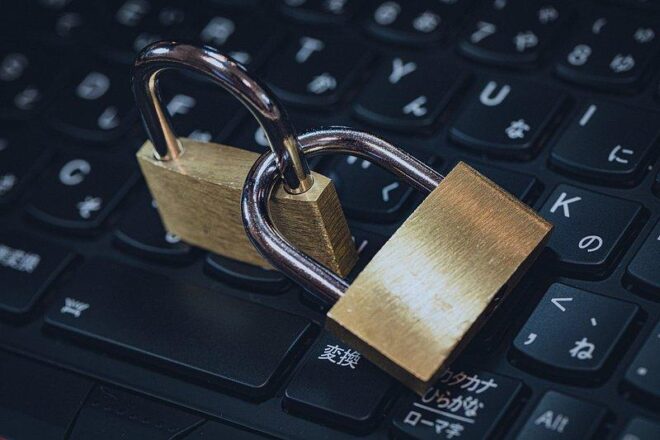Cybersecurity is the defense against hostile assaults by spammers, hackers, and cybercriminals against internet-connected devices and services. Businesses employ this technique to guard against identity theft, ransomware attacks, phishing scams, data breaches, and monetary losses. We only need to take a look around to notice how reliant on technology everyday life relies on it. The advantages of this trend include almost instantaneous access to information on the Internet as well as the contemporary comforts offered by Internet of Things ideas and smart home automation technologies.
Which five phases make up cyber security?
Certain frameworks divide these into five tiers, such as the “cybersecurity concepts” attribute values in ISO 27002:2022:
- Recognize
- Protect
- Detect
- Respond
- Recover
GitLab rolls back the CVE-2024-45409 patch to earlier iterations.
GitLab has patched a critical security flaw (CVE-2024-45409) that affected all self-managed installations in its Community Edition (CE) and Enterprise Edition (EE) platforms. Upgrading right away to the freshly patched versions 16.10.10, 16.9.11, 16.8.10, 16.6.10, 16.5.10, 16.4.7, 16.3.9, 16.2.11, 16.1.8, or 16.0.10 is highly recommended for administrators. The crucial security patch that was first made available for GitLab version 17. x.x and 16.11.10 is present in these versions.
A serious flaw in GitLab’s OmniAuth framework’s Security Assertion Markup Language (SAML) authentication is known as CVE-2024-45409. The SAML single sign-on (SSO) protocol makes it easier for users to log in by enabling them to access several services with a single set of credentials.
This vulnerability stems from a bug in the OmniAuth-SAML and Ruby-SAML libraries, notably in the way GitLab evaluates the SAML replies supplied by an Identity Provider (IdP).
The defect arises from GitLab’s improper handling of several SAML assertion components, most notably the extern_uid (external user ID). An essential identifier for identifying users among various systems is extern_uid. An attacker can circumvent authentication and obtain unauthorized access to the GitLab instance by manipulating or misconfiguring the SAML response. Because of the vulnerability, attackers may design fraudulent SAML answers and fool GitLab into thinking they are authorized, genuine users. Attackers may obtain unfettered access to private GitLab repositories and could jeopardize intellectual property, source code, and other vital company assets by completely evading SAML authentication.
Although the security alert warns that efforts may have already been made, GitLab has not specifically validated any instances of exploitation in the wild. Among the warning signs of potential exploitation are:
‘RubySaml::ValidationError’-related errors (failed attempts) Unusual or new “extern_uid” values in the authentication logs (trials that succeeded) Inaccurate or missing data in SAML answers. A single user with many “extern_uid” settings (possible account breach), authentication using SAML from unknown or dubious IP addresses. GitLab highly advises upgrading to one of the patched versions very now for any impacted self-managed installations.
Proposal for “Next-Gen”
Vendors, analysts, and security professionals refer to the components of their next-generation endpoint security using a number of technical terms. The phrase was first used to describe solutions that detected dangers without the need for conventional file scanning techniques. However, the term “next-generation” now also refers to cybersecurity solutions that boost prevention, effectiveness, and speed through the use of real-time predictive techniques like machine learning (ML), artificial intelligence (AI), and behavioral analysis. The phrase sometimes refers to automated threat detection and response tools.
“Is my endpoint protection highly effective at protecting me and my system from the sophisticated, multi-level attacks being used to infect devices today?” is still the true question, though. You need next-generation endpoint protection to do that, which looks at every process running on every device and blocks every possible attack vector to thwart the nefarious strategies that are being used daily.
Next-Gen Endpoint Protection: What Is It?
Next-generation endpoint protection is a type of security that can successfully fend off multi-stage, high-volume, high-velocity attacks that target endpoint data and devices. The phrase was first used to distinguish between more traditional endpoint security solutions that relied on signatures and those that made use of cloud-enabled real-time detection techniques like AI and machine learning.
Features for monitoring and defending against sophisticated threats are commonly included in next-generation endpoint security software, such as automated detection and response (ADR) or endpoint detection and response (EDR) capabilities. Behavioral analysis, ransomware defense, and anti-script/anti-exploit features are further crucial features.
Inexpensive Cybersecurity Measures
- The simplest thing you can do to up your security and rest easy at night knowing your data is safe is to change your passwords.
- You should use a password manager tool like LastPass, Dashlane, or Sticky Password to keep track of everything for you. These applications help you to use unique, secure passwords for every site you need while also keeping track of all of them for you.
- An easy way for an attacker to gain access to your network is to use old credentials that have fallen by the wayside. Hence delete unused accounts.
- Enabling two-factor authentication to add some extra security to your logins. An extra layer of security that makes it harder for an attacker to get into your accounts.
- Keep your Softwares up to date.
“Click with caution, surf without suspicion.”Due to the widespread use of the internet today, cybersecurity is one of the most important global demands because cybersecurity attacks may seriously jeopardize national security. To keep your system and network security settings free of viruses and malware, not only the government but also the general public should educate people about the need to regularly update their anti-virus software and update their system and network security settings.




